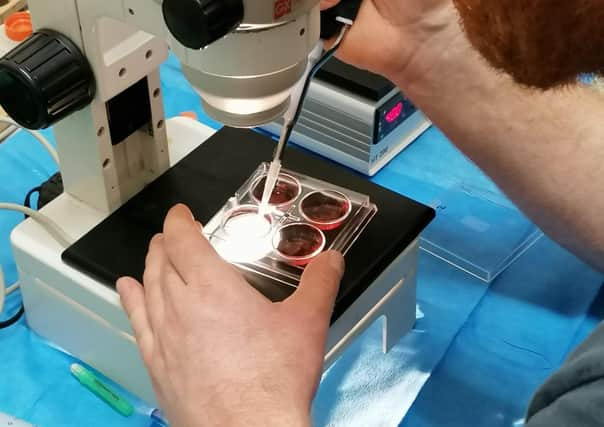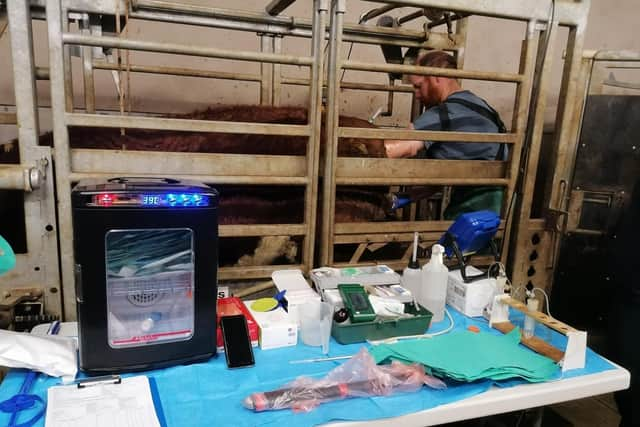Use of advanced breeding techniques


Philip Abernethy from Parklands Veterinary Group, shares how use of ovum pick up (OPU) and in vitro fertilisation (IVF) works in practice.
“The OPU technique involves collecting multiple eggs from a cow or heifer in one go, which can then be fertilised in the lab to produce embryos, essentially the same process as IVF for humans,” he says.
Advertisement
Advertisement
“The first step is to select the donor cow or heifer, choosing an animal with genetic traits which farmers want to see more of in the herd.


“The animal then receives a hormonal treatment to stimulate multiple eggs to be released simultaneously, a process called superovulation.”
Mr Abernethy explains that eggs are harvested using a minimally-invasive technique, with the help of a specialised scanner. They are then sent to the lab to be fertilised, and the embryos frozen for future use.
“The main benefit is our farm clients can achieve faster genetic progress in their herds, as they can produce more calves per donor each year,” he says.
Advertisement
Advertisement
“It’s possible to work with heifers at a younger age, and still allow for a normal first calving age of 24 months. The process also enables production of embryos from pregnant animals and genetic recovery from cull animals.”
An alternative to OPU is the conventional flushing technique, which Mr Abernethy uses with his clients. This also involves superovulation using hormonal treatment, but rather than harvesting the eggs, the cows are inseminated at the point of heat.
“The embryos can then be collected seven days later and either transferred into another cow, or frozen for future use,” he says.
“It’s my beef clients and increasingly my dairy clients who want to take a strategic approach to herd genetics who typically choose to use these techniques.”
Advertisement
Advertisement
Mr Abernethy highlights that IVF has some benefits over conventional flushing.
“The frozen IVF embryos show higher conception rates during heat stress periods. IVF often works well in cows that have responded poorly to conventional flushing. IVF allows for a higher production of embryos over time with reduced semen usage and allows for the production of embryos from younger animals as well as from pregnant animals. This means more offspring from genetically rich cattle can be produced,” he concludes.